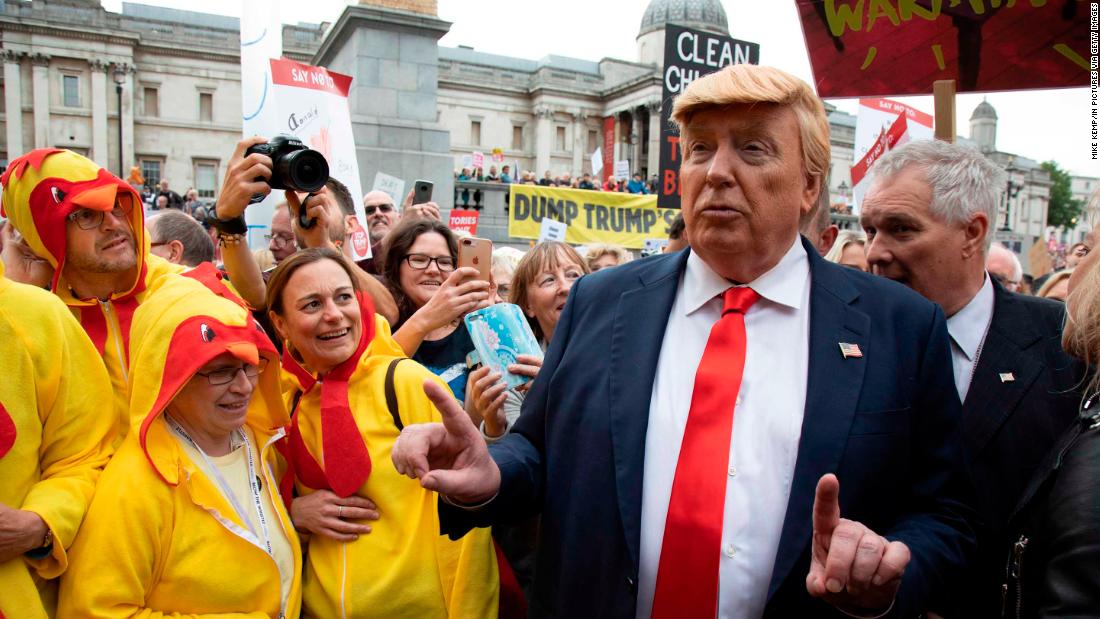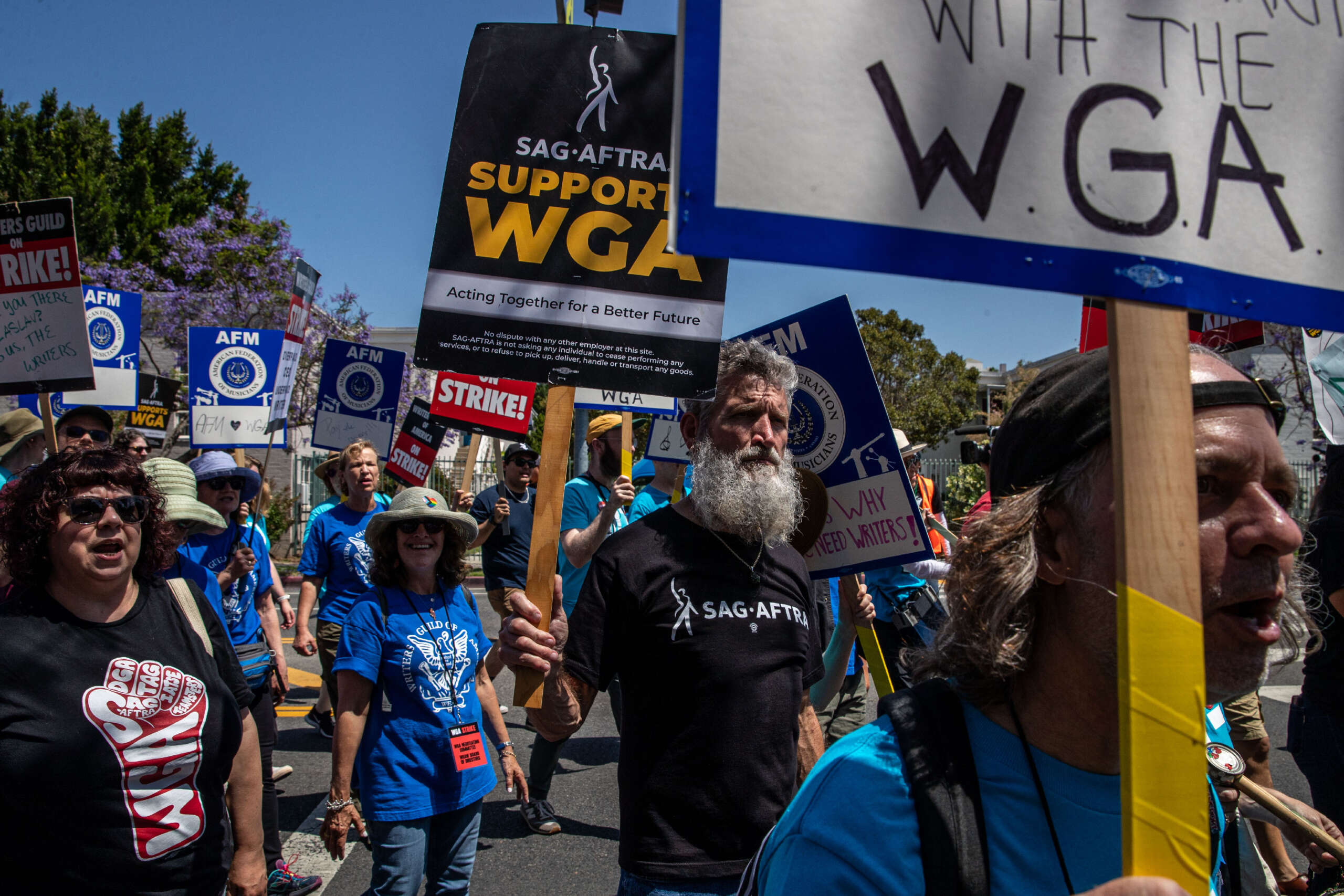Hear The Voices: Nationwide Protests Against Trump

Table of Contents
The Catalysts for Nationwide Outrage
The nationwide protests against Trump weren't sparked by a single event but rather a confluence of factors, primarily rooted in policy disagreements and the president's often divisive communication style.
Policy-Driven Protests
Many protests were directly driven by specific policies enacted or proposed during the Trump administration. These policies resonated deeply with various segments of the population, igniting widespread opposition.
-
Immigration Protests: Trump's hardline stance on immigration, including the "travel ban" targeting several Muslim-majority countries and the "zero tolerance" policy at the border separating families, sparked massive protests across the country. Cities like New York, Los Angeles, and Chicago saw huge demonstrations, with activists highlighting the human rights implications of these policies. Notable figures like Alexandria Ocasio-Cortez were prominent in these protests. These protests resulted in significant media coverage and some legislative challenges to the policies.
-
Healthcare Reform Protests: The attempts to repeal and replace the Affordable Care Act (ACA) led to significant protests, particularly amongst those who stood to lose healthcare coverage. Protests were widespread, with individuals and organizations expressing concerns about access to healthcare and the potential consequences of dismantling the existing system. The protests highlighted the deep divisions in the US regarding healthcare access and affordability.
-
Environmental Protection Protests: Trump's administration's rollback of environmental regulations and withdrawal from the Paris Agreement on climate change triggered major protests organized by environmental groups and concerned citizens. These protests emphasized the urgency of addressing climate change and preserving the environment. Marches and rallies were held in major cities and smaller towns alike, underscoring the broad concern about environmental issues.
Rhetoric and Divisive Language
Trump's communication style, often characterized by inflammatory statements and divisive rhetoric, significantly fueled the protests. His controversial tweets, public speeches, and interactions with the media frequently ignited widespread outrage and opposition.
-
Inflammatory Statements: Numerous instances of what many perceived as racist, sexist, or xenophobic remarks provoked significant backlash and protests. These statements often targeted specific groups or individuals, further escalating tensions and galvanizing opposition.
-
Perceived Disrespect: Critics pointed to Trump’s perceived disrespect for democratic norms and institutions, including his attacks on the judiciary and the media, as a key factor contributing to the widespread protests. These actions were viewed by many as undermining democratic values and eroding public trust in government.
-
Political Polarization: Trump's rhetoric undoubtedly contributed to the increasing polarization of American politics, creating a climate where dissent was not only expressed but also became a powerful and visible force. The protests themselves often became focal points for this polarization, with counter-protests and clashes adding to the complexity of the situation.
Geographic Spread and Demographics of the Protests
The anti-Trump protests were truly nationwide, extending far beyond major metropolitan areas. The protests were remarkably diverse in terms of participants and motivations, yet united in their opposition to the Trump presidency.
Mapping the Movement
Protests occurred across the United States, with significant demonstrations taking place in major cities such as New York, Los Angeles, Chicago, Washington D.C., and San Francisco. However, smaller towns and rural areas also witnessed protests, demonstrating the widespread nature of the opposition. Online maps and social media played a crucial role in coordinating these protests, showcasing their geographical reach.
Diverse Voices, Unified Goals
The protests attracted a diverse range of participants, transcending age, ethnicity, and socio-economic backgrounds. While individual motivations varied, common goals united them.
-
Age Groups: Protests involved people of all ages, from young students to elderly retirees, reflecting a broad spectrum of societal concern.
-
Ethnicities: Participants spanned a wide range of ethnic and racial backgrounds, highlighting the multi-faceted nature of the opposition to Trump's policies and rhetoric.
-
Social Classes: The protests attracted individuals from different socio-economic backgrounds, demonstrating that opposition transcended class divisions.
The unifying factor was a shared sense of unease regarding Trump’s policies and rhetoric, and a desire for a more inclusive and just society.
Impact and Legacy of the Protests
The nationwide protests against Trump had a profound impact, both in the short term and leaving a lasting legacy on the American political landscape.
Short-Term Impacts
The protests garnered significant media attention, shaping public discourse and influencing public opinion. While they didn't directly lead to immediate policy reversals on all fronts, they put pressure on the administration and helped galvanize opposition.
-
Media Coverage: The sheer scale and widespread nature of the protests ensured extensive media coverage, both nationally and internationally, bringing the issues at stake to a wider audience.
-
Public Opinion: While measuring the precise impact on public opinion is complex, polls indicated shifts in public sentiment on specific issues, reflecting the protests' influence.
-
Policy Changes: Although not always directly attributable to the protests, some minor policy adjustments or shifts in rhetoric could be partially linked to the pressure exerted by these widespread demonstrations.
Long-Term Significance
The protests' long-term significance is multifaceted. They served as a powerful reminder of the importance of civic engagement and the role of protest in a democratic society.
-
Political Discourse: The protests significantly shaped political discourse, bringing attention to crucial issues and pushing the boundaries of acceptable political rhetoric.
-
Rise of Activism: The protests inspired and empowered a new generation of activists, contributing to a rise in political activism across various causes.
-
Ongoing Relevance: The issues raised during the protests—immigration, healthcare, environmental protection, and democratic values—continue to be central to the American political debate, highlighting the enduring legacy of this pivotal moment in American history.
Conclusion
The nationwide protests against Trump's presidency represent a significant chapter in American political history. These protests, fueled by policy disagreements and divisive rhetoric, were geographically widespread and demographically diverse, showcasing the depth of opposition to certain aspects of the Trump administration. Understanding the scale, diversity, and lasting impact of these protests is crucial to understanding contemporary American politics. Learn more about the nationwide protests against Trump by exploring online archives of protest documentation and engaging with organizations dedicated to promoting civic participation and social justice. Understand the voices of dissent; become informed about the impact of political activism in shaping our nation’s future.

Featured Posts
-
 The Future Of Google Is A Breakup Inevitable
Apr 22, 2025
The Future Of Google Is A Breakup Inevitable
Apr 22, 2025 -
 A Combined Approach Examining The Military Assets Of Sweden And Finland In A Pan Nordic Context
Apr 22, 2025
A Combined Approach Examining The Military Assets Of Sweden And Finland In A Pan Nordic Context
Apr 22, 2025 -
 Strained Ties Examining The Growing Rift Between The U S And China
Apr 22, 2025
Strained Ties Examining The Growing Rift Between The U S And China
Apr 22, 2025 -
 Hollywood Shut Down Writers And Actors On Strike What This Means For Film And Tv
Apr 22, 2025
Hollywood Shut Down Writers And Actors On Strike What This Means For Film And Tv
Apr 22, 2025 -
 The Value Of Middle Managers Benefits For Companies And Employees
Apr 22, 2025
The Value Of Middle Managers Benefits For Companies And Employees
Apr 22, 2025
